Street Calls of the Week
Introduction & Market Context
Algoma Steel Group Inc (NASDAQ:ASTL) presented its second quarter 2025 earnings results on July 30, 2025, highlighting a mixed performance amid challenging market conditions. The Canadian steelmaker reported sequential revenue improvement but continued to face profitability challenges, with a widening net loss despite a slightly improved EBITDA position compared to the previous quarter.
The presentation comes as Algoma navigates a complex steel market environment influenced by trade policy changes, including increased US tariffs on imported steel and aluminum, and ongoing global supply chain disruptions. The company’s stock closed at $5.85 prior to the earnings presentation, but has since experienced a 4.41% decline, reflecting investor concerns about the continued losses.
Quarterly Performance Highlights
Algoma reported Q2 2025 shipping volume of 472,000 net tons, representing a marginal increase from Q1 2025 (470,000 tons) but a 6% decrease compared to Q2 2024 (503,000 tons). Steel revenue reached $534 million, up 15% quarter-over-quarter but down 11% year-over-year.
As shown in the following performance highlights slide, the company posted an Adjusted EBITDA loss of $32 million, an improvement from the $47 million loss in Q1 2025 but significantly below the positive $38 million recorded in Q2 2024:
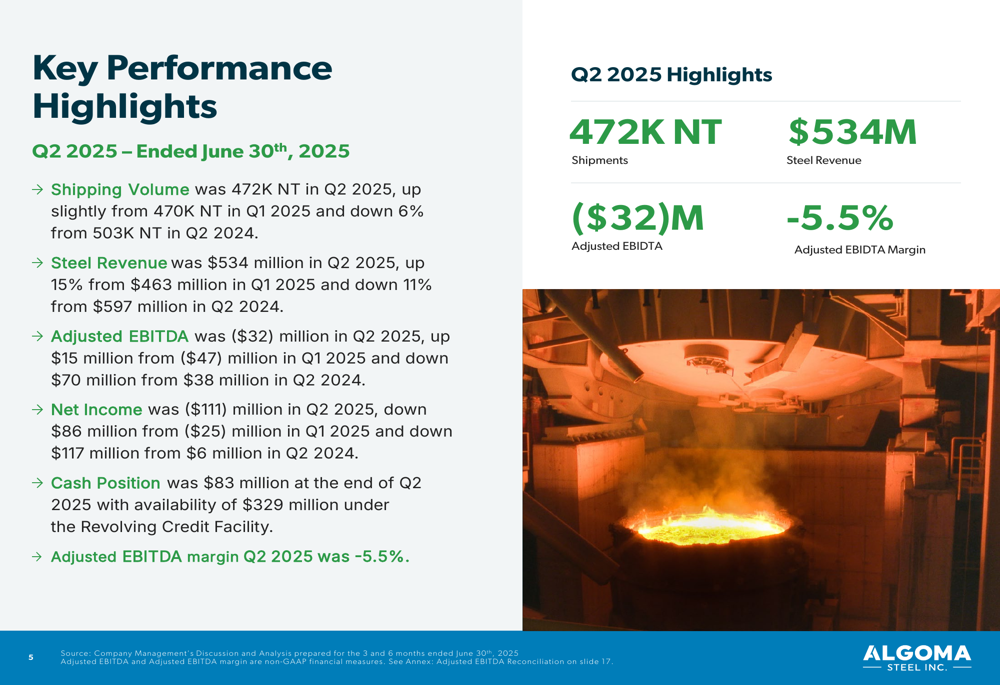
The company’s financial position shows a cash balance of $83 million with an additional $329 million available under its Revolving Credit Facility. However, the net income picture deteriorated substantially, with a $111 million loss in Q2 2025 compared to a $25 million loss in Q1 2025 and a $6 million profit in Q2 2024.
A detailed breakdown of the quarterly financial performance reveals that while net sales realization improved to $1,132 per ton (up 15% from Q1), cost pressures continued with cost of steel products sold at $1,144 per ton:
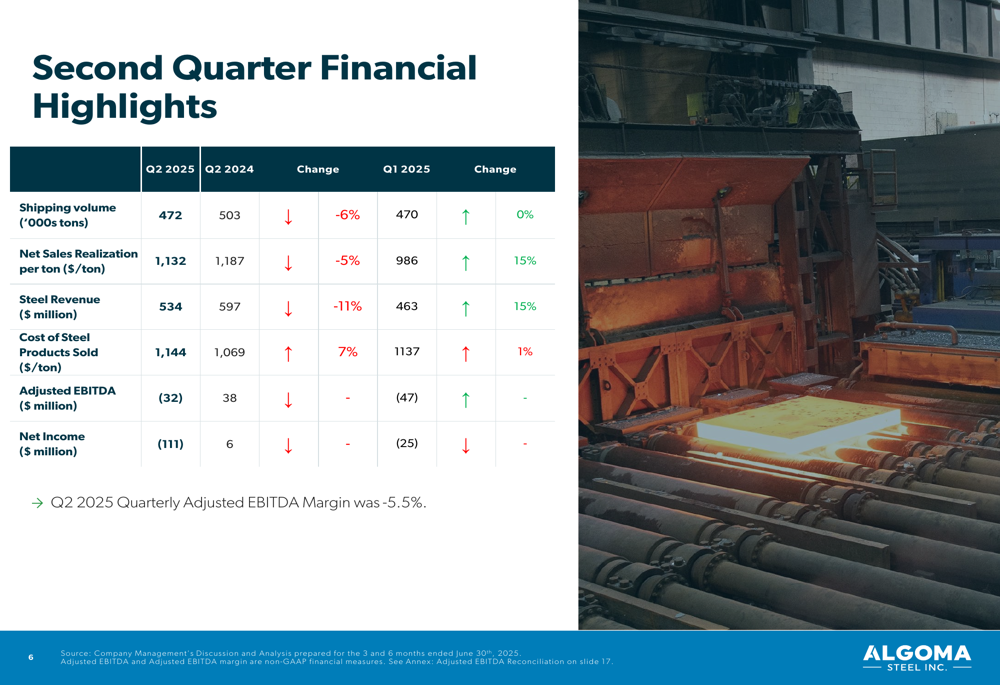
Strategic Initiatives
The most significant development highlighted in Algoma’s presentation was the achievement of "First Heat" from its new Electric Arc Furnace (EAF) in July 2025, marking a critical milestone in the company’s strategic transformation. The EAF project, which has been central to Algoma’s long-term strategy, is progressing according to plan as evidenced by the construction update:
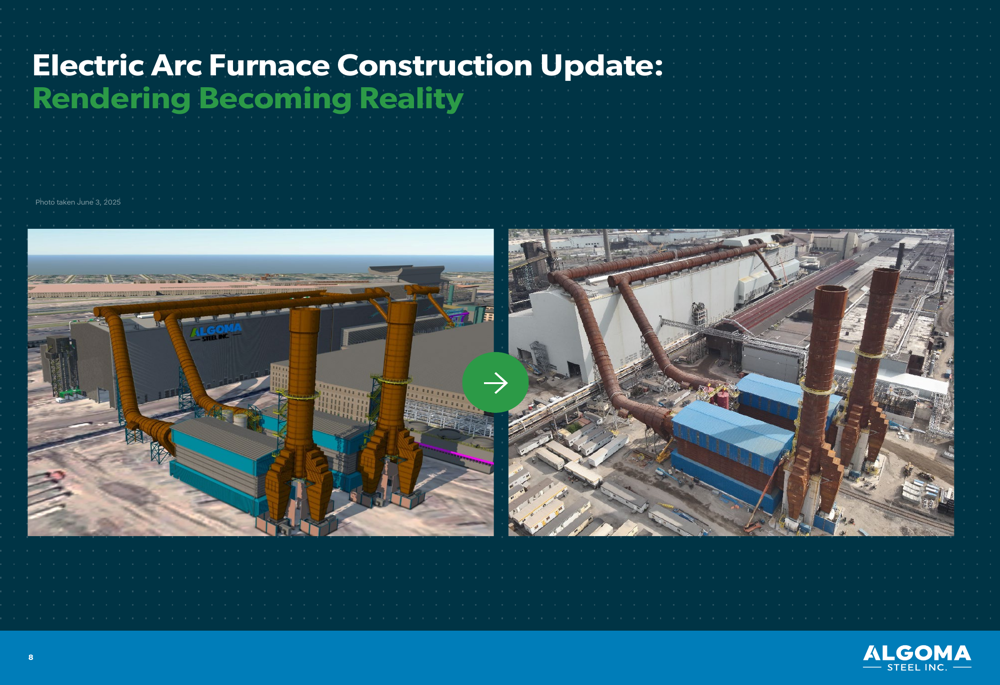
The successful first heat operation represents a pivotal moment for Algoma, as shown in these images from the milestone event:
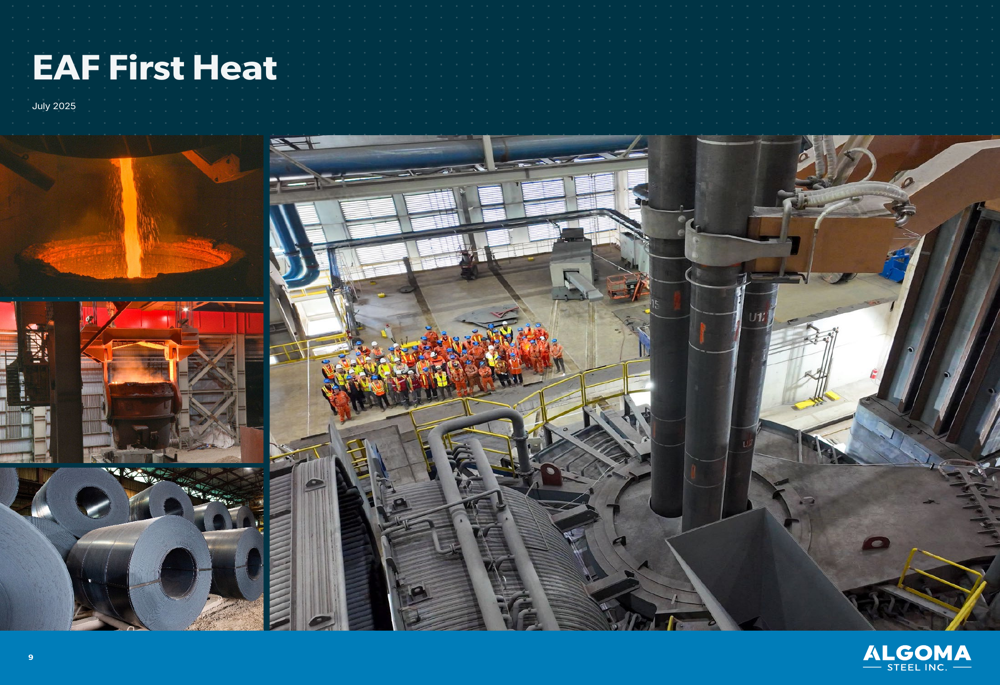
Algoma outlined its transition plan, which includes operating both the traditional integrated steelmaking facilities and the new EAF simultaneously during 2025-2026, before fully transitioning to EAF steelmaking from 2027 onward. This phased approach is designed to minimize operational disruption while maximizing production capabilities:
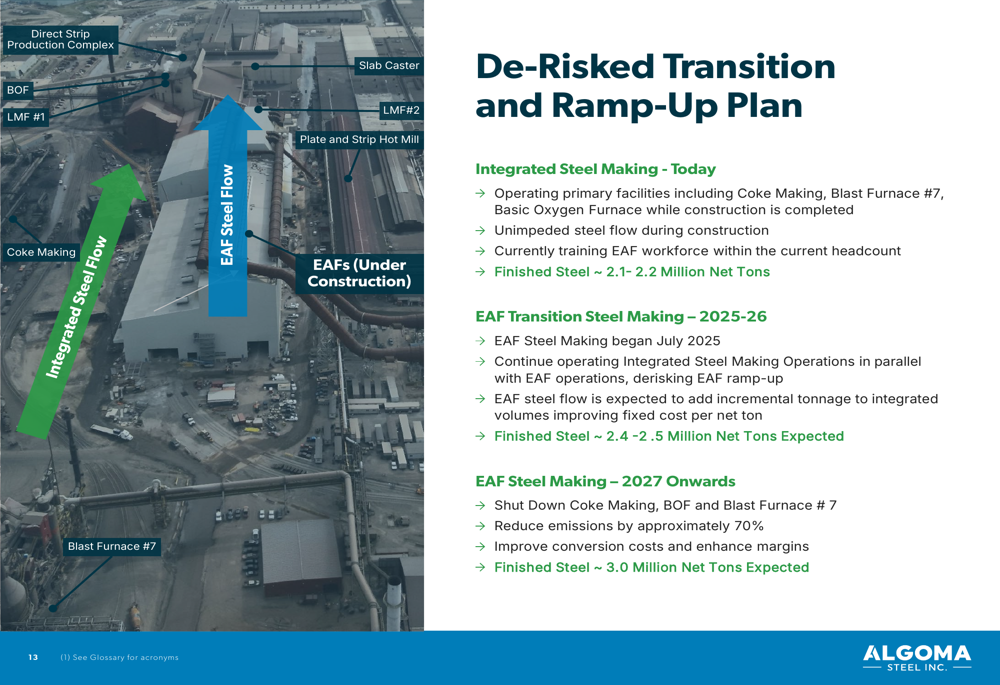
The company emphasized that the full EAF transition is expected to reduce emissions by 70% and improve conversion costs, aligning with both environmental goals and operational efficiency targets.
Market Outlook
Algoma’s presentation included market analysis showing Hot Rolled Coil (HRC) and As Rolled Plate (ARP) price trends, which provide context for the company’s revenue performance and future expectations:
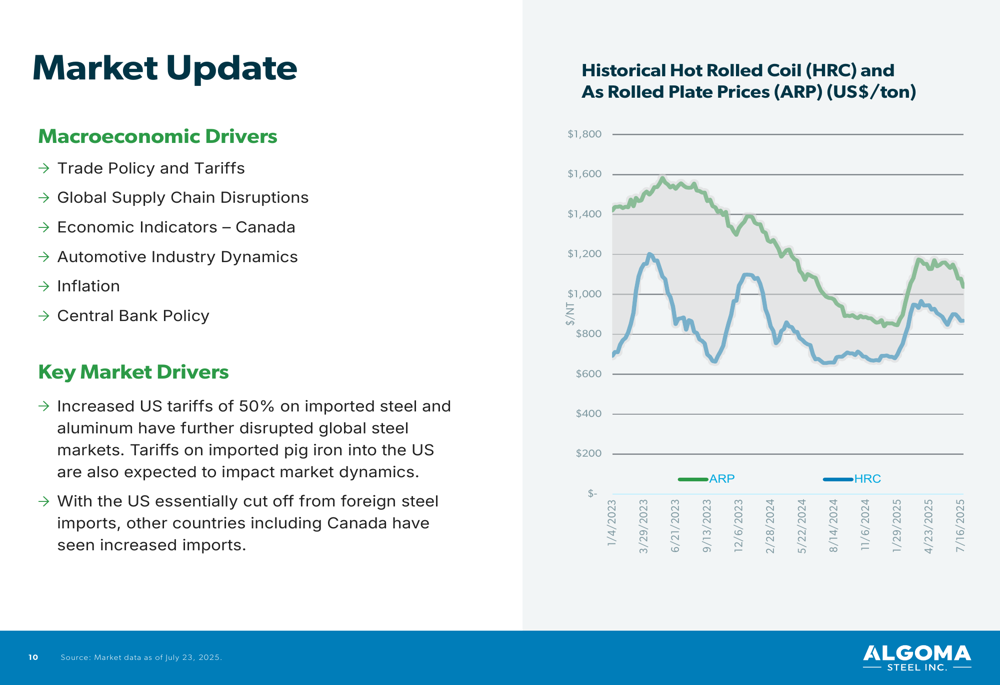
The market update highlighted key macroeconomic drivers affecting the steel industry, including trade policies and economic indicators for Canada. These factors will continue to influence Algoma’s pricing power and profitability in coming quarters.
Detailed Financial Analysis
Algoma’s Q2 2025 results reflect ongoing challenges in achieving profitability despite the revenue improvement. The Adjusted EBITDA margin remained negative at -5.5%, though this represents an improvement from Q1 2025.
The company’s working capital management shows a slight improvement, with net working capital decreasing to $717 million in Q2 2025 from $730 million in Q1 2025:
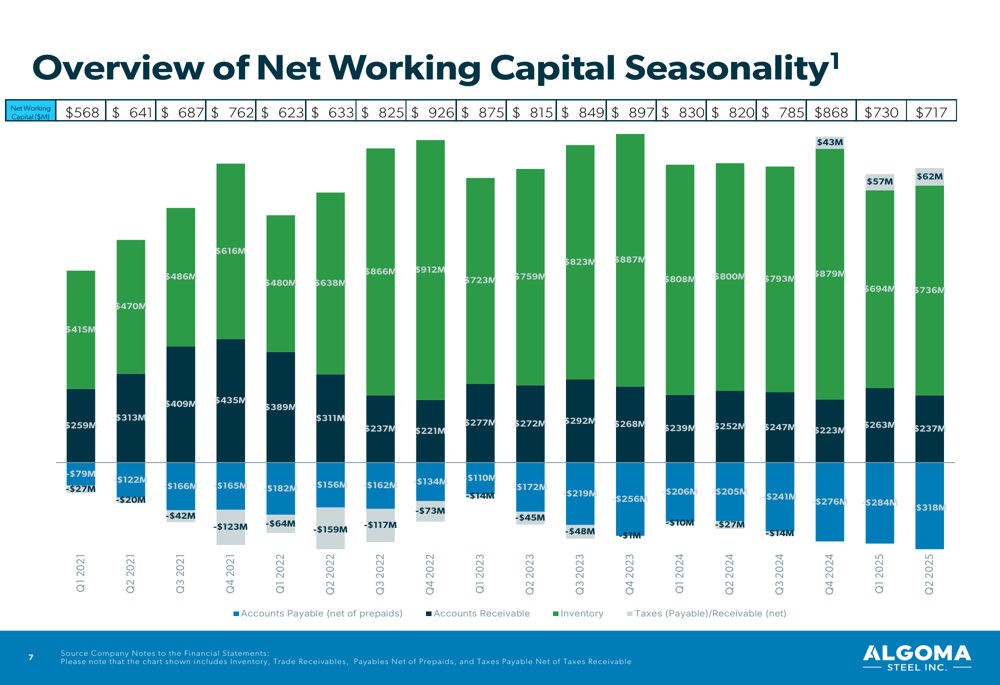
The reconciliation to Adjusted EBITDA reveals significant impacts from depreciation ($38.2 million) and inventory write-downs, contributing to the substantial gap between net loss and Adjusted EBITDA figures.
Safety and Sustainability Focus
Algoma highlighted its continued improvement in safety performance, with the Lost Time Injury Frequency Rate (LTIFR) decreasing to 0.25 in 2025 YTD, continuing a long-term positive trend:

The company’s commitment to sustainability was also emphasized, with the EAF project being central to its environmental strategy. Algoma released its 2024 Sustainability Report covering the nine months ended December 31, 2024, which details its progress on sustainability goals.
Forward-Looking Statements
Looking ahead, Algoma is focused on completing the transition to EAF production by 2025-2026, which management believes will enhance efficiency and reduce costs. The company’s strategic roadmap emphasizes operational improvements, financial discipline, and ESG initiatives:
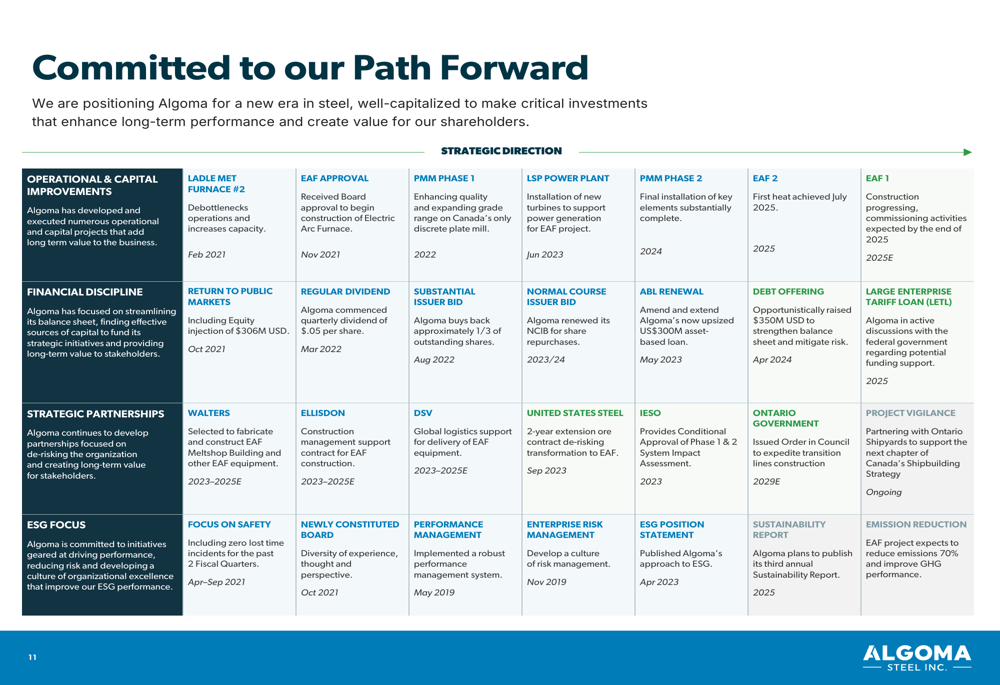
This strategic direction builds on previous guidance from Q1 2025, where the company had targeted higher shipments for Q2 (which was marginally achieved) and aimed to reach quarterly plate production near 100,000 tons.
While the Q2 results show continued challenges, the successful EAF milestone represents tangible progress toward Algoma’s transformation goals, potentially positioning the company for improved performance as the transition progresses and if market conditions stabilize.
Full presentation:
This article was generated with the support of AI and reviewed by an editor. For more information see our T&C.
